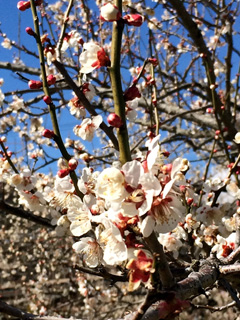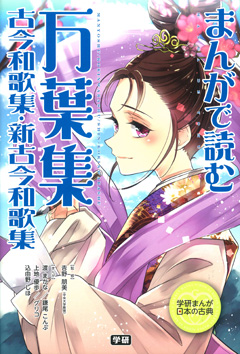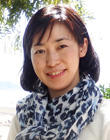New Imperial Period, the Manyoshu, and Education on Classical Japanese Literature
Tomomi Yoshino
Professor, Faculty of Letters, Chuo University
Areas of Specialization: Classical Japanese Literature (Medieval Literature and Waka Poetry Literature)
Introduction
Almost one month has passed since the Imperial period in Japan has changed from the Heisei Period to the Reiwa Period. From the first-ever preliminary announcement of plans to change the name of the Imperial era, all of Japan was in a festive and celebratory atmosphere, and full of expectation to a new era. This mood was augmented by the appointment of a new Emperor. I realized the effect of preliminary celebration in anticipation of the name change for the Imperial period--namely, safety from disaster, public peace, and prosperity in the new period.
The name of the new Imperial period is Reiwa, a term taken from the Manyoshu, the oldest anthology of poems. During the holiday period following the start of the Reiwa Period, I met with some friends for the first time in a long while. I was continuously asked my opinions and impressions about the name Reiwa. Of course, they were interested in my ideas because I research classical Waka poetry. I am not an expert on period names, so I was only able to state my surprise that Chinese classical texts were not used as the source for the new name, but that I liked the clarion sound produced by the syllable re from the ra column of the Japanese syllabary table. Nevertheless, as a classical Waka poem researcher, I had some thoughts regarding the source of the name Reiwa. Furthermore, the changing of the period name caused me to reflect upon the present circumstances surrounding classical literature. In this article, I will discuss such thoughts in conjunction with my recent research activities.
Tabito and plum blossom viewing party
First, I would like to discuss the source of the name Reiwa. As reported extensively by the media, the name originates from a preface to 32 poems composed at a plum blossom viewing party in Volume 5 of the Manyoshu. The party was held by Otomo no Tabito, who served as governor of Dazaifu in Tsukushi Province. According to the preface, the party was held on January 13th in year 730 (Tenpyo 2) of the Japanese calendar, which is equivalent to February 8th in the solar calendar (Gregorian calendar).[i] The purport of this preface is that January is an auspicious month in which to do things. The passages describe a gentle breeze (the name Reiwa was taken from this section), the dazzling white of the plum blossoms, fragrant grass, butterflies fluttering about the garden, and beautiful spring skies with wild geese flying on their return north. The narration invites the reader to pass around a cup of sake and compose poems on contented and merry feelings underneath the falling plum blossoms.

White plum blossoms (Photograph by Tomomi Yoshino)
As already indicated, this preface was based on Lantingji Xu (Preface to the Orchid Pavilion), a calligraphy work written by Wang Xizhi. (Also, early indications have noted influence from Guitian Fu (Return to the Field), a literary work by Zhang Heng in the Wen Xuan Selections of Fine Literature.[ii]) The preface shows the poetic gathering where people escape the depravity of daily life and enjoy refined pleasure. However, the latter part presupposes that the common fate of an unavoidable death creates the same feelings in people regardless of the flow of time and eras. Therefore, poetry written about these internal feelings will touch the hearts of people in future generations.[iii] In the preface of the plum blossom viewing party, expressions based on Lantingji Xu are found in passages other than sections which are the namesake of Reiwa. Consequently, if we consider the preface as encompassing the entirety of Lantingji Xu, the preface of the plum blossom viewing party describes immutable feelings which are concealed while enjoying the party; specifically, feeling of human beings faced with a finite lifespan. Furthermore, the passages show a confidence in the universality of literature.
It is believed that the preface was written by Tabito, the host of the plum blossom viewing party. Tabito was already 63 years old when he was appointed as governor of Dazaifu. Considering his position at the head of the prestigious Otomo Clan, his appointment to governor essentially amounted to a demotion in the face of the growing power of the Fujiwara Clan. Immediately after assuming the new position, Tabito faced the inauspicious death of his beloved wife. Furthermore, the Conspiracy of Prince Nagaya had occurred in the distant capital of Nara about six months before the party. When considering the sad state of Tabito's life in Dazaifu, it is easy to understand why he based his work on the Lantingji Xu.
Incidentally, it is worthy to note that all 32 poems following this preface were written in Manyo-gana, which is an ancient writing system that employs Chinese characters to represent the Japanese language. For example, this style was used for the following poem written by the host Tabito.
「わが園に(和何則能尓: wagasononi)梅の花散る(宇米能波奈知流: umenohanachiru)久方の(比佐可多能: hisakatano)天より雪の(阿米欲里由吉能: ameyoriyukino)流れ来るかも(那何列久流加母: nagarekurukamo)」
Modern translation: "Plum blossoms are falling in my garden. I wonder if snow flows far from the heavens." (This verse refers to how plum blossom petals resemble snowflakes.)
In these poems, Chinese characters were used to accurately express each sound of the native Japanese syllabary.[iv] Tabito's comparison of falling plum blossoms to snow and his use of the phrase "snow flows" are attributable to classical Chinese poetry such as Six Dynasties poetry. Tabito likens the state of falling blossoms to the auspicious sign of snowflakes fluttering from the heavens, thus creating a fantastical scene.
The purpose of the party was to enjoy the beauty of plum blossoms, a flower that had been introduced from China and was still novel to the Japanese. Even so, the idea of composing Waka poetry instead of classical Chinese poetry shows in many levels how the plum blossom viewing party successfully adopted and integrated foreign culture into Japanese culture. In this respect, the name Reiwa as derived from this passage is an appropriate Imperial period amidst the trends of globalization in modern society.
Interest in classical Japanese literature and education on classical Japanese literature

Reading as Manga--Manyoshu, Kokin Wakashu and Shin Kokin Wakashu (Gakken Plus)
After the announcement of the new Imperial period name, there was boom in demand for Manyoshu and it disappeared from the shelves of bookstores. (Furthermore, Reading as Manga--Manyoshu, Kokin Wakashu and Shin Kokin Wakashu reached temporarily No. 1 in Amazon's ranking of educational manga! I helped supervise the production of this manga, which was published a few years ago by Gakken Plus.) I hope this leads more people to develop an interest in classical Japanese literature. However, in today's world, only an auspicious event such as changing to the Reiwa Period can generate interest in such literature. Without interest, there is no demand for such content and related information is not updated.
An example of failure to update information can be seen in a statement by the Prime Minister about the new Imperial period name. In this statement, the Manyoshu is introduced as "a Japanese work containing poems composed by people from a wide range of strata in society, including not only Emperors, Imperial Family members, and nobility, but also soldiers and farmers, thus symbolizing Japan's rich national culture and long-established traditions."[v] This statement is related to how textbooks in junior high schools and highs schools have continually explained that the Manyoshu was a poetic anthology from Emperors down to the common people. However, in academic circles of classical Japanese literature, this interpretation of the anthology was denied about 20 years ago.[vi] Failure of such conclusions to reach society demonstrates the current lack of interest in classical Japanese literature and the inability of researchers to introduce new information. Also, subjects and methodologies tend to be segmented and deepened during research of classical Japanese literature; unfortunately, the methodologies and results are not reintroduced into the field of higher education. This creates a gap between research and education, and ultimately, we fail to create interest in learning about classical Japanese literature.
Based on my desire to improve such conditions, I have taken various measures in recent years. For example, I have organized research groups with other researchers of classical Japanese literature who specialize in different periods and subjects and education professionals. Then, I created materials updated with specialized knowledge obtained through research. These materials enable extensive and enjoyable study on the essence of classical Japanese literature. I have also planned and held workshops which focus on classical Japanese literature by using an active style of learning.[vii] These workshops are attended by a wide range of participants such as students from high schools, universities, graduate schools, as well as teachers from high schools and universities. By engaging in the same topics from an equal position, the workshops enable students and teachers to obtain different viewpoints, gain new awareness, and conduct in-depth learning. Furthermore, by having participants cooperate to address research themes, the workshops cultivate ways of thinking and skills also used in modern society.
These workshops and other related research activities were selected for a Grant-in-Aid for Scientific Research (KAKENHI) this academic year.[viii] Although these workshops are a small initiative with a limited number of people, I look forward to returning the results to society to the greatest possible extent. I will continue my utmost efforts to increase interest in classical Japanese literature.
- ^ Since it was still early in the season for falling plum blossoms, some researchers believe that the falling blossoms or even the party itself was fiction. (Headnote (1) from The Collections of Classical Japanese Literature (New Edition)--Manyoshu; published by Shogakukan)
- ^ Already indicated by Keichu in his work Manyo Daishoki (Commentary on the Manyoshu) in the early Edo Period. Also, in the latter Edo Period, Chikage Tachibana explained that this preface must have been composed after learning Lantingji Xu in his work Manyoshu Ryakuge.
- ^ My explanation of the Lantingji Xu refers to the following article by Yoshikazu Shinada: Messages from Otomo no Tabito Revealed by Reiwa--Explained by a Professor from the University of Tokyo (distributed at 2:00 PM on April 21 (Sun.) by Gendai Business)
- ^ This is one of the features of Volume 5 and unique composition method when considering the whole of the Manyoshu. However, the same style of representing the sounds of the Japanese syllabary is found in volumes of the Manyoshu which are thought to have been edited by Otomo no Yakamochi, the son of Otomo no Tabito.
- ^ From the Statement by the Prime Minister issued regarding the announcement of the new Imperial period name on April 1, 2019.
- ^ Yoshikazu Shinada: The Invention of Manyoshu--Classical Japanese Literature as a Nation-State and Cultural Device (published by Shin-Yo-Sha, 2000). Incidentally, textbooks in recent years have finally stopped printing this explanation.
- ^ Themes of workshop held annually since 2015 are as follows.
First workshop: "Performing Waka Poetry--Tales of Ise," second workshop: "Interaction Between Pictures and Sentences--Enjoying the Likening of the Edo Period," third workshop: "Diversity of Waka Poetry Interpretation--Course on Divine Poetry," fourth workshop: "Transcription and Rhetoric of Poetry--Becoming a Manyo Poet." - ^ KAKENHI (C) "Creation of Educational Material for Intensive Research Courses on Classical Japanese Literature and Practical Research on Constructing an Educational Model Through Cooperation Among High Schools and Universities
 "
"
- Tomomi Yoshino
Professor, Faculty of Letters, Chuo University
Areas of Specialization: Classical Japanese Literature (Medieval Literature and Waka Poetry Literature) - Tomomi Yoshino mainly researches Waka poetry from the Heian Period to the Kamakura Period. In recent years, she has organized active-learning research groups on Japanese literature with researchers from other universities, cooperated with high school teachers, and explored the ideal form of education for classical Japanese literature.
Her written works include Gotobain and His Era (published by Kasama Shoin), Saigyo Poetry Anthology (co-written; published by Iwanami Bunko), Collected Works of Japanese Poets—Gotobain (published by Kasama Shoin), Literary Training for University Students—Classical Japanese Literature Series (co-written; published by Sanseido) and more.








